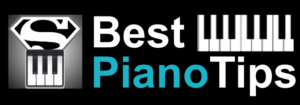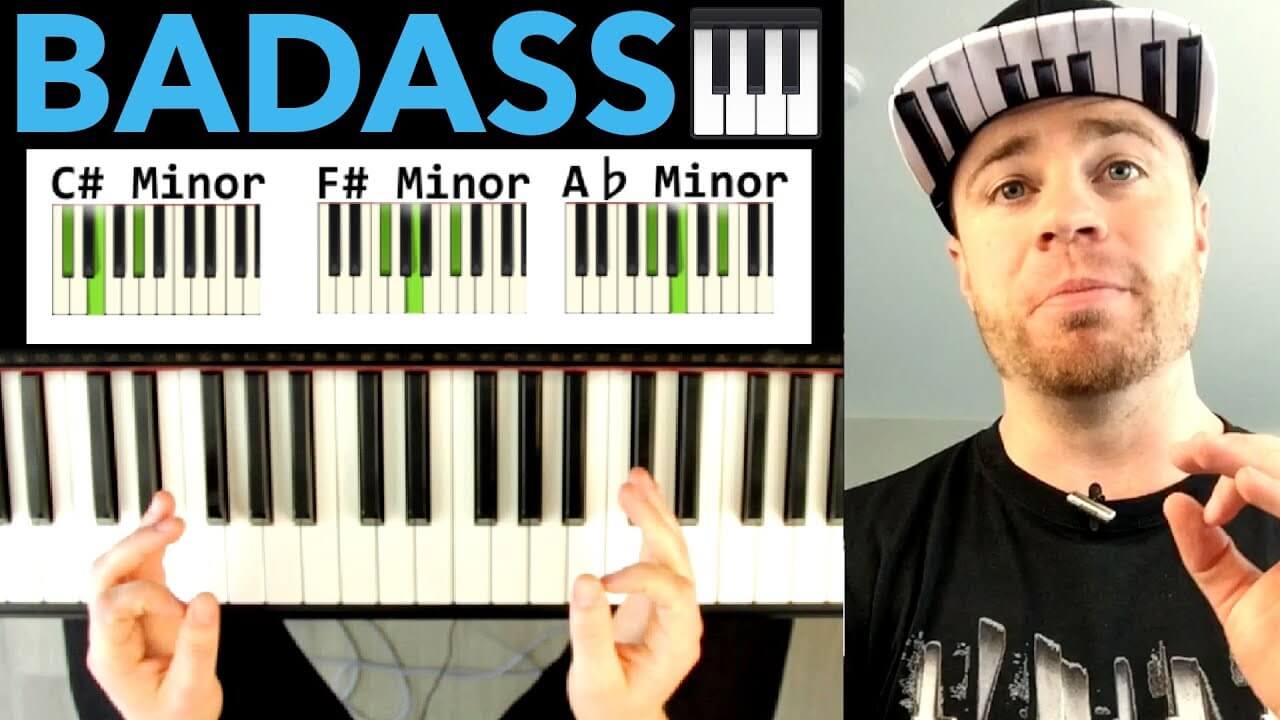Today you’re going to learn a dark and powerful piano chord progression you can literally copy and paste into your compositions TODAY.
Honestly, I almost didn’t want to give this chord progression up because it is so good. A lot of it is taken from Chopin and I just felt I had to share it with you today.
In the video above you’ll see a fully fleshed out version of this progression so be sure to check that out as well.
Also, I have a bunch of helpful music theory PDF cheat sheets that’ll make it even easier to follow along, even if you don’t know any music theory at all.
Learning This Chord Progression
The nice part about this chord progression is it’s actually 12 chords long, but it’s really 3 groups of 4 chords. Even better, each of these groups can be used as a standalone chord progression or you can link them up to create one giant progression.
The whole progression includes the following groups:
Cm Fm Bb G
Ebm Abm Db Bb
F#m Bm E Am
If you don’t know music theory that’s okay, you can print off the major chords and minor chords for free with the cheat sheets I provide in my free course. Just sign up for free, click the link, and scroll down to the PDF sections where you’ll see the major and minor chords.
Group 1
The first group of 4 chords, Cm Fm Bb G, you can actually just keep looping these 4 chords and use it as a chord progression on its own. You’ll notice it’s very similar to the chord progression used in “Apologize” by One Republic. 3 out of the 4 are actually the exact same chords.
I love this chord progression because it sounds so good even if you have slight variations of it.
Group 2
The second group of chords, Ebm Abm Db Bb, you can also loop and use as a standalone chord progression.
Furthermore, you can lump them together with the first four chords we went through.
Group 3
The last four chords, F#m Bm E Am, you’re also able to loop. Now, you have three groups of four chords that you can use standalone or linked together to get the full progression.
How to Bring this Chord Progression Alive
If you don’t have any ideas for how you can add more flare than just playing block chords, all you have to do is play the exact same chords using a pattern on top of it.
What I typically like to do with the left hand is to keep the base note. You don’t have to, but it keeps it easy if you’re just starting out.
If you’re a beginner and don’t want to use octaves, which might be too challenging, you can just do Cm, Fm, Bb, G, single notes.
With your right hand you can do a bunch of different patterns. You could just do block chords or, one of the ones I like, is where you alternate between the top two notes and bottom notes in your right hand.
I go through a couple other patterns in this video if you’d like to see a few more.
All you have to do is pick a couple of these patterns and then you can mix it up by playing different octaves as well. You could also switch up the rhythm a little bit. This is really the part when you can use your creativity and figure out how you’re going to compose it and mix it up.
Remember, you can get the PDF cheat sheets as well as other lessons on learning piano in my Become a Piano Superhuman Course.

